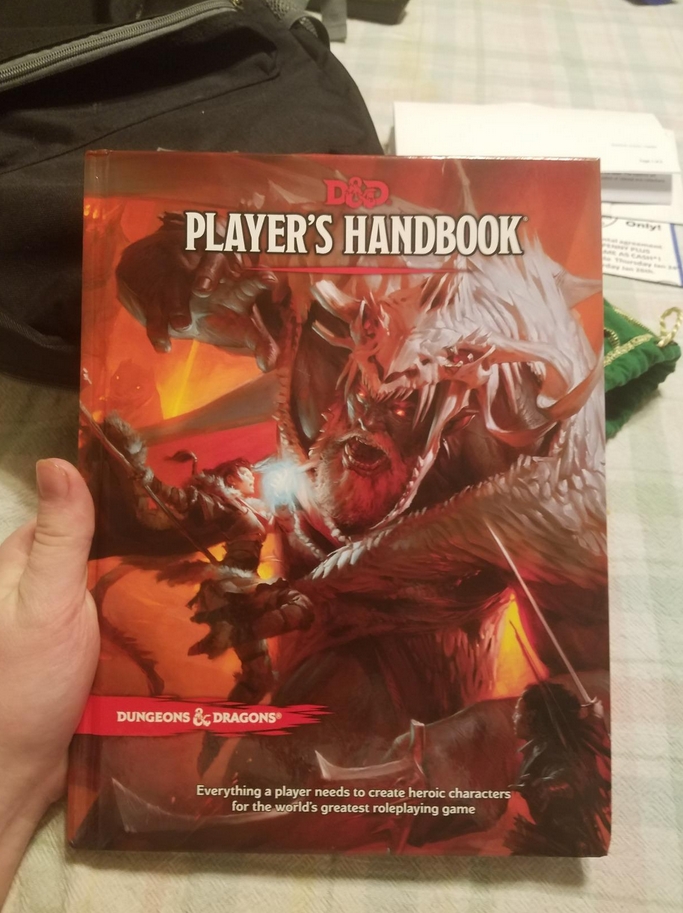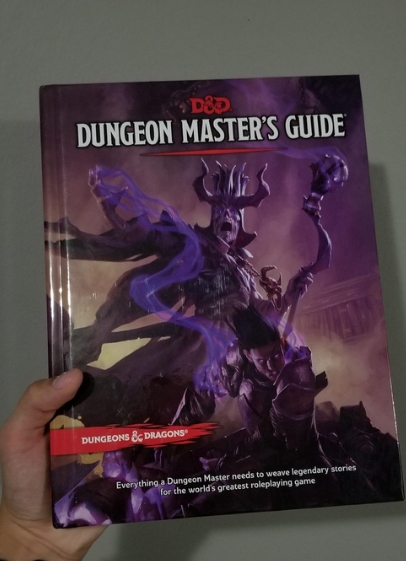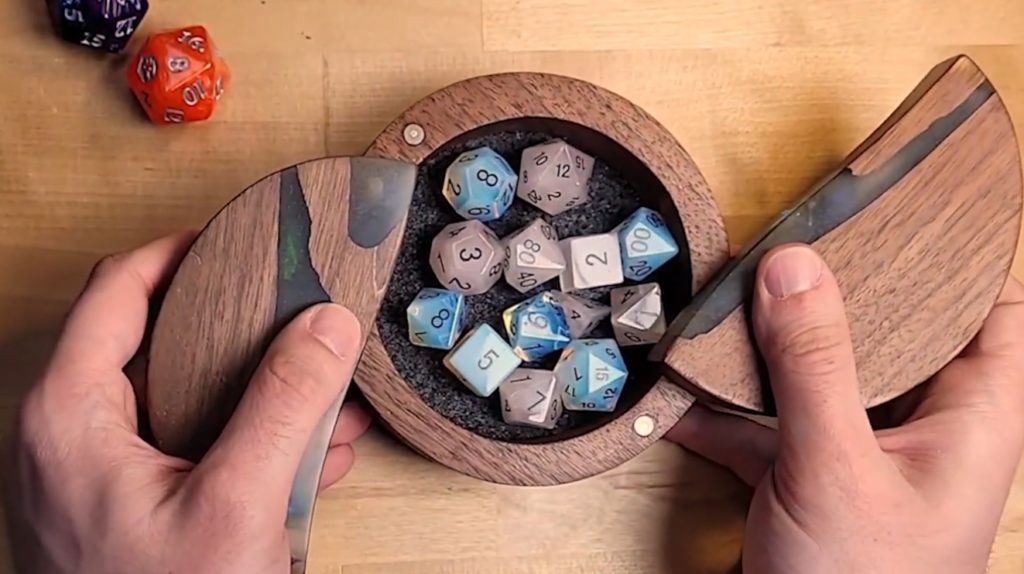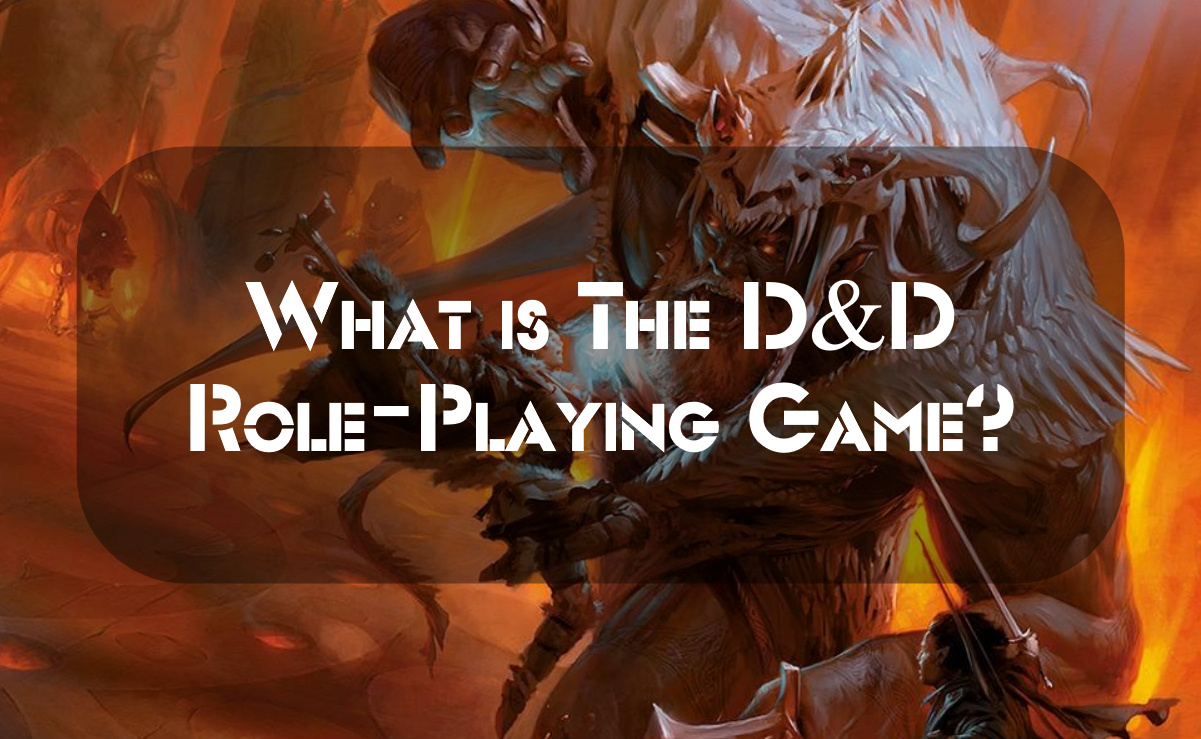D&D is a pen-and-paper role-playing game. This means that you sit together at the table with a pencil and paper and experience an adventure.
One person takes on the role of the game master and knows the adventure, while the other players each take on a fictional character and plunge into this adventure.
The game master (or game leader) describes the world, personifies people the characters encounter there, describes obstacles, and more. In this way, the game master and the other players interact with each other and experience great stories and memorable adventures in their own imaginations.
Dungeons & Dragons was published in 1974 and has been completely updated several times since then. Currently, it is available in the 5th edition. D&D is considered very beginner-friendly because it has relatively few rules, offers good beginner products, and many different ready-made worlds exist.
How does D&D work?
A lot works through communication. The game master describes the current situation (place, people, dangers…) and the players have to react to it (in the person of their characters). Mostly there are certain tasks and goals in the adventures.
By talking to each other, there are hardly any limits to the possibilities, even if the characters must follow rules within this world. Normal actions succeed easily, but if you want to do something special, whose outcome is not automatically positive, you have to take a test.
For this purpose, each character has its own character sheet (that’s why it’s called Pen & Paper) with various values that embody the character’s abilities. So if a character wants to climb a wall, for example, he can’t just do it (unless there’s a ladder on the wall, for example). Instead, the player must make a climbing trial for their character.
To do this, they roll a W20 (a twenty-sided die) and add to it the attribute value (here, for example, Strength) and, if necessary, the value of the Athletics skill, if they are skilled at it. For example, if they have a value of 6 (Strength + Athletic ability) and roll a 14, the total value is 20.
The difficulty is determined by the game master. Usually, a 15 is enough, but if the wall is very slippery, for example, then the test is made more difficult and they have to reach a value of 20, for example. In other cases, the roll can be made easier and they only need a 10.
In addition, there can be special disadvantages (they roll 2 dice and they have to take the lower result) or advantages (2 dice and they take the higher result).
The result of these trials affects the progress of the story, of course. If they pass the climbing test, they are on top of the wall. If they don’t make it, they may have to find another way. Samples are also used in battles to determine the outcome.
And so they experience a great story, interact with the world (via the game master), complete trials from time to time, fight now and then, and hopefully reach the goal in the end. Whereby it depends here more on the way because role-playing is above all a community experience that is simply great.
That’s why the game master doesn’t play against the players but with them. Of course, they should put obstacles in their way and not make it too easy for them, but it is not about the game master “winning.” Instead, everyone’s goal is to have a great time and experience the feeling of really being immersed in another world.
How to get started with D&D?
It’s quite easy and inexpensive to get started with D&D. Wizards of the Coast, the publisher of Dungeons & Dragons, offers special beginner products.
For instance, there is a basic set that contains slimmed-down rules and a beginner’s adventure. With this set, you can start very cheap and fast and experience your first roleplaying evenings. Dice are also included.

If you want to start for free, you can sign up for the free newsletter on Wizards of the Coast’s website and then get the contents of the starter set as PDF files for free.
Another option is the D&D5 Player’s Guide. This rulebook, which is available individually or as part of the gift set, contains everything you need to know as a game master and player for your first adventures. You can also use it to create your own characters. A disadvantage is that there is no finished adventure included. You would have to buy this separately, but there is also a large selection.
Which books do I need for D&D?
As just written, you really only need the Player’s Handbook to get started.
If you want to create your own adventures later on, or if you want to expand and extend finished adventures, the Player’s Handbook is worthwhile. In it, the game master will find a lot of information and help to create their own adventures and to play “better.” From my own experience, I can say that you want to become more creative very quickly as a game master.

The monster manual is also only worthwhile if you want to get creative as a game master.

With it, you can equip your own adventures with fancy monsters that are just the right challenge for your hero group. In addition, this book also serves as a great source of inspiration. Some gamemasters pick out an exciting monster here and write an adventure around it.
How long does D&D take?
The length of a D&D game session depends on how long you want to sit together. Some small adventures are played in 2 hours, while other epic adventures take several evenings to complete. Many roleplaying groups meet in the afternoon and play into the night. Time just flies when you’re having fun together. And if the adventure is not yet finished, you simply continue the next time at the same place.
How many people do you need for D&D?
The minimum staffing for a D&D game session is 2 people – a game master and a player. However, it is usually much more fun if you have 3-5 people at the table. This way, the players (or their characters) can exchange ideas, and you can really experience a story together. With more people, it often becomes problematic again, because then each individual player spends less time in the “spotlight.” Instead, you sit around most of the time while others act. I have had very good experiences with 4 people (game master + 3 players).
Which dice do I need for DnD?

Of course, you need the W20 dice first and foremost, and it’s best to have several of them. When fighting, you also need other types of dice, like the well-known W6, but also a W8 or W10, for example, because you use them to roll the (additional) damage of a weapon in combat.
DnD in Board Games
D&D is very well-known, and it is not surprising that there are many board games set in this world. A classic is Lords of Waterdeep, which unfortunately is not available in English. Here we are the eponymous lords who build new buildings in the city of Waterdeep, hire heroes, and complete quests with them. It’s a great game.
D&D in Magic
Wizards of the Coast’s other big game, Magic: The Gathering, has also explored the Dungeons & Dragons world in the meantime. For example, there is the Magic: The Gathering – Commander Legends: Battle for Baldur’s Gate set, which takes you to the region where probably the most popular D&D computer game is set. I think this crossover is great.
Final
Overall, Dungeons & Dragons is a fantastic game that has captured the hearts of many players around the world for decades. With its vast and immersive world-building, character creation, and endless possibilities for storytelling, it offers a unique experience that is hard to find elsewhere. So if you’re looking for a fun and engaging activity to do with your friends or family, why not give Dungeons & Dragons a try?
FAQ
What is a game master (GM)?
The game master is the player who acts as the storyteller and referee of the game. They are responsible for setting up the adventure, controlling the non-player characters (NPCs), and adjudicating the rules.
What are the different editions of D&D?
There have been several editions of D&D, each with its own set of rules and mechanics. The current edition is the 5th edition, which was released in 2014.
What do I need to play D&D?
You’ll need the rulebooks, dice (typically a set of seven polyhedral dice), character sheets, and a group of players. Optional items include miniatures, maps, and other props to enhance the game experience.
Is D&D suitable for children?
D&D is suitable for children of all ages, although younger children may need help with the rules and mechanics. The game encourages creativity, problem-solving, and teamwork, making it a great activity for families to enjoy together.
How long does a game of D&D last?
A typical game session of D&D can last anywhere from 2-4 hours, but it can be shorter or longer depending on the group and the adventure. A complete campaign can last for several months or even years.
Hey there! I’m Richard Baker, a miniature painter who’s been in the game for a solid decade now. I’ve been painting miniatures for ten years and I’ve got a ton of tips and tricks to share with you all. My website is a treasure trove of knowledge that I’ve gathered from both my own personal experiences and from reading all sorts of books.





Leave a Reply